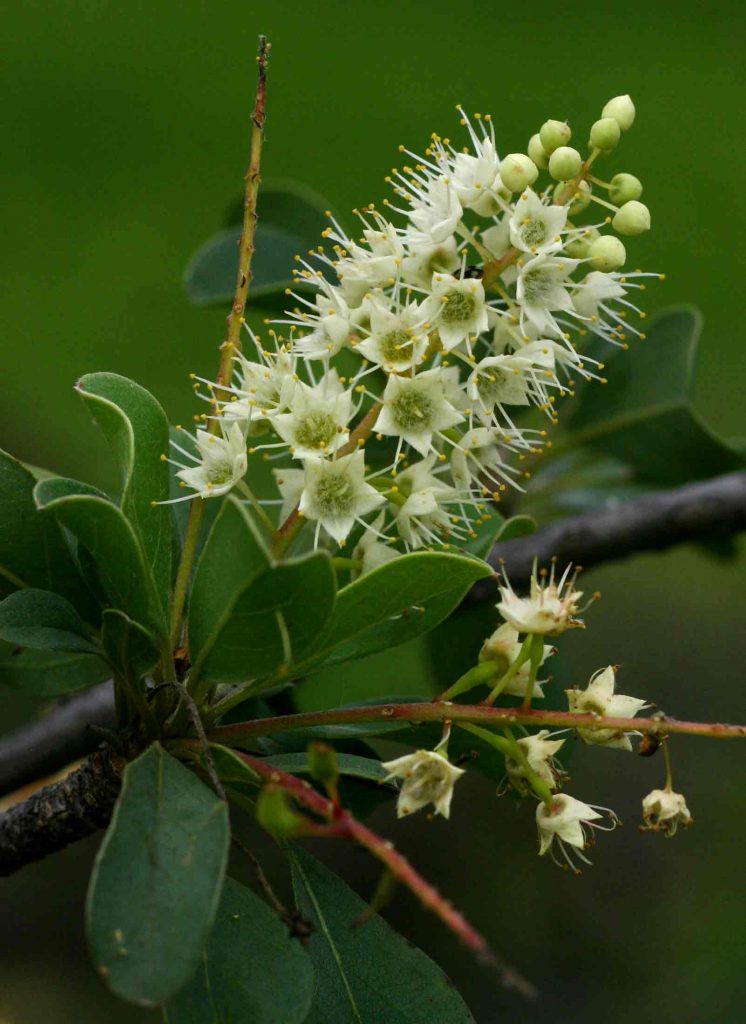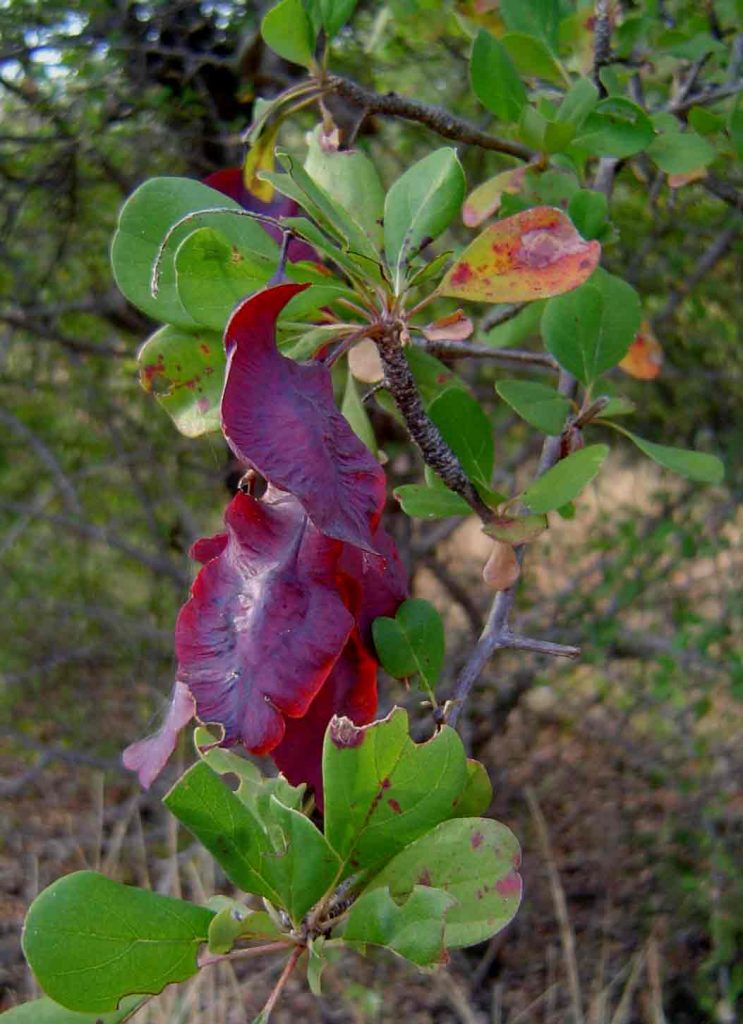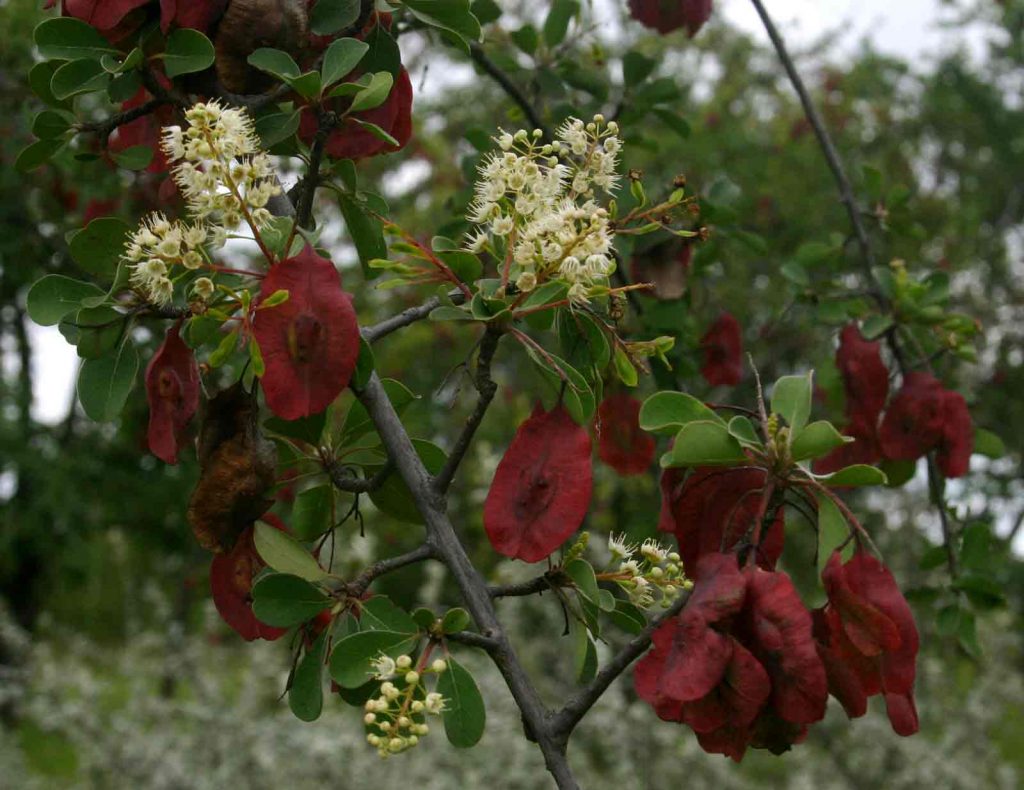By JP Felu

Terminalia prunioides
Common names: Purple-pod Terminalia
Shona: Muchanana
Ndebele: Ivikane
The genus name Terminalia depicts the fact that the leaves of Terminalia grow in terminal rosettes. Prunioides refers to the plum coloured pods. Terminalia prunioides likes low-altitude woodlands and bushveld along the Zambezi. Should you visit the long channel of Inner Harbour, between Binga and the Sebungwe Narrows on Lake Kariba, you can come across some beautiful, practically pure stands of T. prunioides, together with some T. stuhlmannii (the Zig-Zag Terminalia).
This is not a big tree, it usually grows to around 4m high but I believe that under very good conditions it can reach 13m. The bark is brown to grey, rough, vertically striated to fluted and fibrous. Even though the branches can follow a normal pattern they can also be long, thin, drooping and tangled, giving a creeper impression.
The leaves are clustered in rosettes at the ends of dwarf spur-branchlets, obovate to obovate-elliptic, usually 2 to 7cm by 1.5 to 3 cm, thinly textured, dark green above, paler below, often with short soft hairs when young, losing most of these by maturity. The leaf margin is entire and fringed with hair, the apex is round and notched. There are three to seven pairs of lateral veins, slightly indented above. The petiole is very short to nearly absent.

The flowers are white or cream and like most of the other species in the genus, they have an unpleasant smell, but they grow in attractive slender axillary spikes 4-8 cm long, clustered at the tips of the dwarf branchlets (October to January, occasionally later).
The fruit is striking, bright plum-red or purple-red in colour, 4-6 cm by 2-3 cm (January-July), making the trees conspicuous in autumn and winter.
As the tree does not grow very big, the wood has no commercial value, it is nevertheless hard and tough and has been used in hut construction and to make implement handles. The plant is browsed by game but does not appear to be used medicinally.

